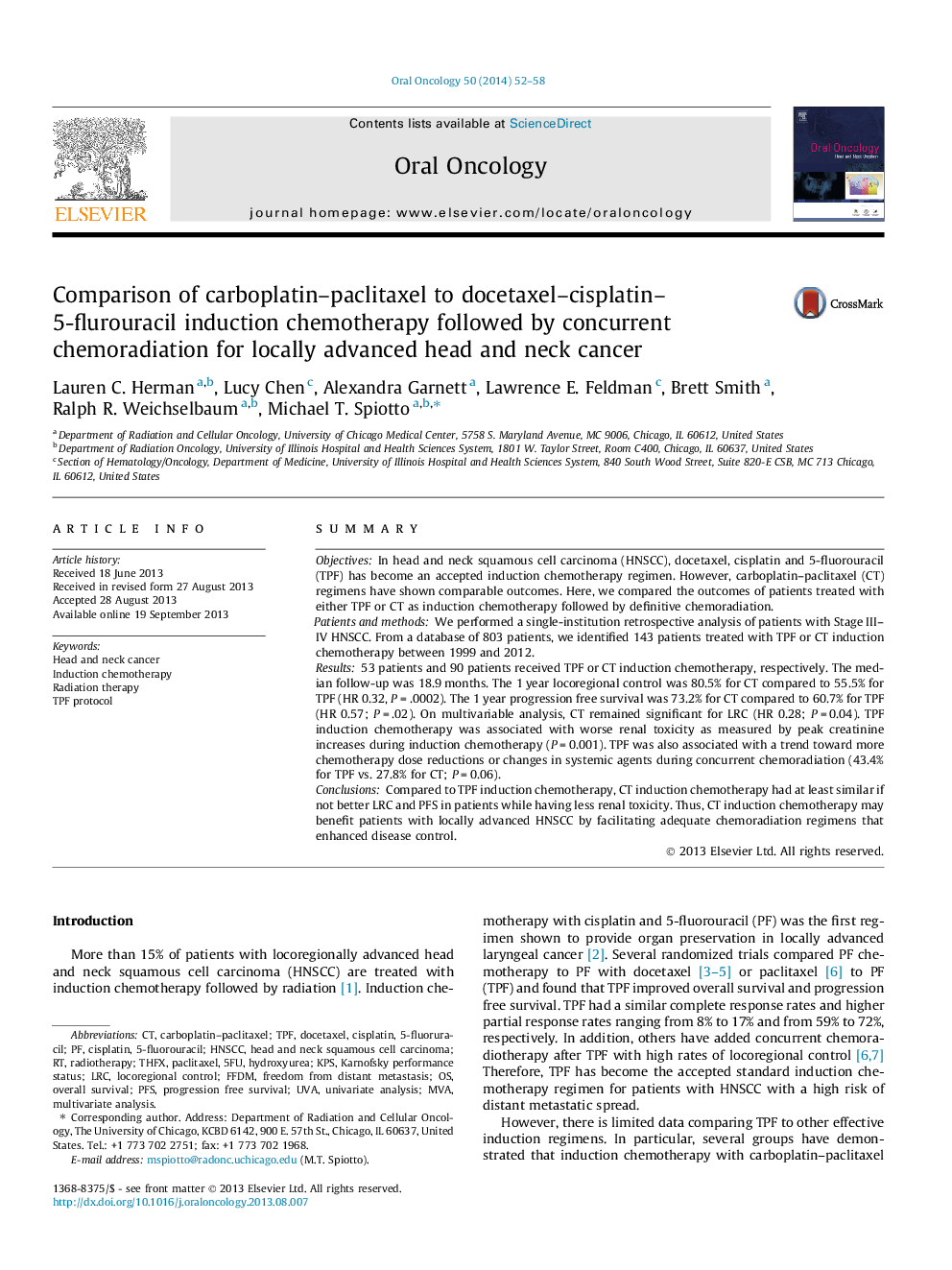| Article ID | Journal | Published Year | Pages | File Type |
|---|---|---|---|---|
| 3164202 | Oral Oncology | 2014 | 7 Pages |
SummaryObjectivesIn head and neck squamous cell carcinoma (HNSCC), docetaxel, cisplatin and 5-fluorouracil (TPF) has become an accepted induction chemotherapy regimen. However, carboplatin–paclitaxel (CT) regimens have shown comparable outcomes. Here, we compared the outcomes of patients treated with either TPF or CT as induction chemotherapy followed by definitive chemoradiation.Patients and methodsWe performed a single-institution retrospective analysis of patients with Stage III–IV HNSCC. From a database of 803 patients, we identified 143 patients treated with TPF or CT induction chemotherapy between 1999 and 2012.Results53 patients and 90 patients received TPF or CT induction chemotherapy, respectively. The median follow-up was 18.9 months. The 1 year locoregional control was 80.5% for CT compared to 55.5% for TPF (HR 0.32, P = .0002). The 1 year progression free survival was 73.2% for CT compared to 60.7% for TPF (HR 0.57; P = .02). On multivariable analysis, CT remained significant for LRC (HR 0.28; P = 0.04). TPF induction chemotherapy was associated with worse renal toxicity as measured by peak creatinine increases during induction chemotherapy (P = 0.001). TPF was also associated with a trend toward more chemotherapy dose reductions or changes in systemic agents during concurrent chemoradiation (43.4% for TPF vs. 27.8% for CT; P = 0.06).ConclusionsCompared to TPF induction chemotherapy, CT induction chemotherapy had at least similar if not better LRC and PFS in patients while having less renal toxicity. Thus, CT induction chemotherapy may benefit patients with locally advanced HNSCC by facilitating adequate chemoradiation regimens that enhanced disease control.
